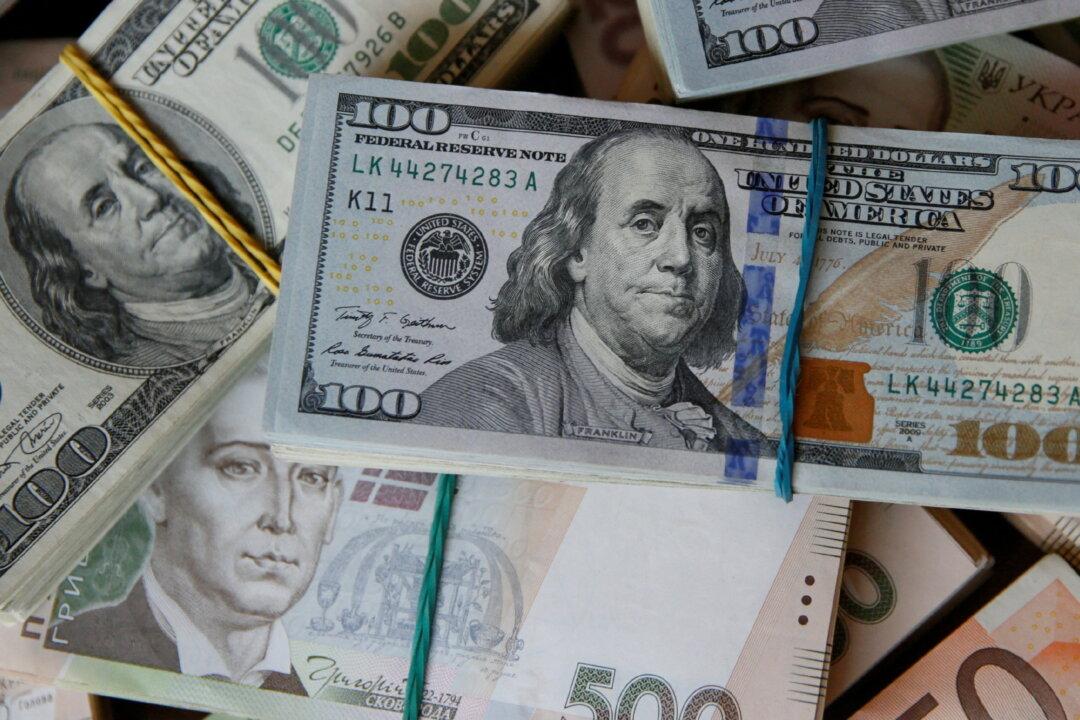LONDON—The U.S. dollar was just below a six-month high on Friday, having strengthened overnight following U.S. economic data, while the yen fell to 10-month lows.
Markets were adjusting to a new outlook for central bank rate hikes after the European Central Bank on Thursday raised rates to a record high of 4 percent but signalled the hike was likely to be its last. Eurozone bond yields and the euro fell as investors bet the central bank would start cutting rates next year.





